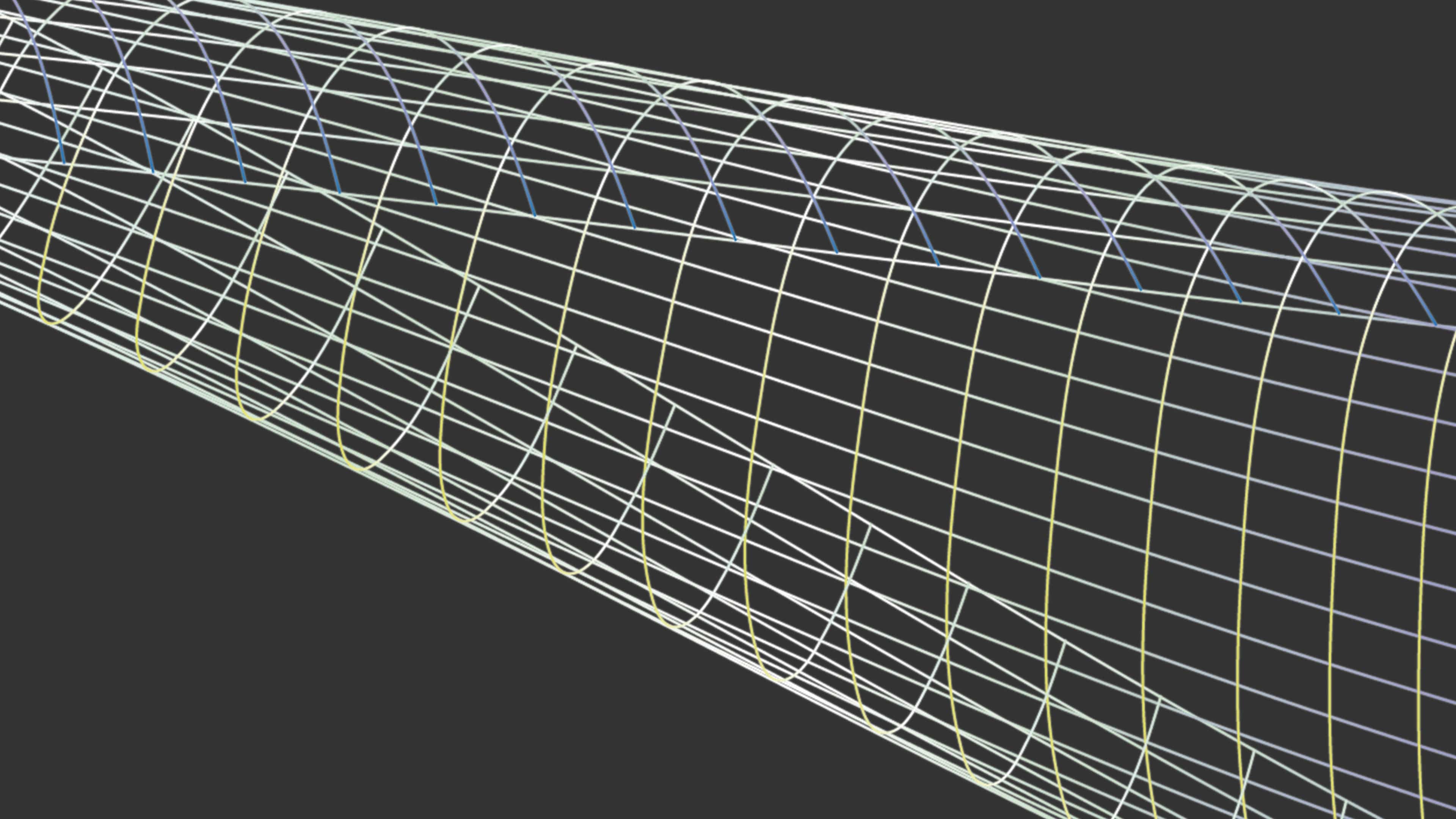Li Jin – Web3 could usher in a golden age for content creators – big and small

Picture the internet as you know it. The likes of Google, Apple, Meta and Amazon reign supreme; we’re at the whim of their algorithm shifts without having any way to access the data within their closed platforms. If you’re a content creator it only gets worse. Work can be ripped off without recompense and you’re always at risk of being booted off your platform – potentially leaving you without followers or revenue stream.
This is an iteration of the internet known as Web2, and it’s our current reality. So far we’ve known two types of the world wide web – Web1 and Web2 – but its third and most novel version yet is fast approaching.
If our current web is highly centralised, with a few key players controlling the bulk of our communication and commerce, then Web3 may just be the thing to democratise it. This is the conviction of Li Jin, a co-founder and general partner at the venture firm Variant, which is investing in Web3 and the ownership economy. According to Jin, Web3 has the potential to be a “renaissance” period that will usher in a “golden age of content”.
“You just have to look back in history to see that every new era of technology corresponds to a new type of creativity that becomes possible,” she says. “If you’re a really niche creator today it’s really difficult to make a living. But there will be a flourishing of creators who have a very specialised type of value proposition in Web3, and they will have a much easier time monetising.”
Through the blockchain and other media assets like NFTs, Jin says, Web3 has the structures in place to facilitate the flow of money in a way that we’ve never seen before. Such a capability, Web3 devotees believe, has the ability to finally wrest power from publishers and platforms, giving way to a web that is egalitarian and possibly even utopian.
For the uninitiated the concept of a new type of internet may seem alien and unlikely, but Jin, a blockchain specialist, says that it is already happening and is the fastest-growing area of the web currently. In order to gain a deeper understanding, HUNGER spoke with her about what Web3 will look like for users and how it might transform the world as we know it.
What are the differences between Web1, Web2 and Web3?
People tend to describe each successive era of the web as a different action that the user was empowered to take. Web1 was “read”, so for the first time you could read all different types of content on all these webpages.
Web2 introduced the ability for interactivity, so not only were you able to read content, you were able to “write” as well. Facebook and Instagram, for example, are Web2 social platforms and they’re populated not just with content that they’ve made but by other users’ content too.
Web3 is “read”, “write” and “own”. You’re able to interact with platforms and you’re also able to own digital media that’s on them, or a part of the platform itself. Ownership is really the word I think of when I think of Web3 – it’s the keystone of new user experiences here and comes through in user ownership of media assets like NFTs.
In theory this can aid content creators – especially niche ones who can’t currently make a living on Web2. Do you think we’re going to see the rise of a new type of creator with the advent of Web3?
Absolutely. If you’re a really niche creator today, it’s very difficult to make a living unless you have passionate fans who are willing to go out of their way to subscribe to your Patreon or Substack. As a result there are fewer of those creators and more of the mega-famous celebrities who are creating content that has general mass appeal – that’s the type of creator who is really enfranchised in Web2. But because of the inbuilt money rails of Web3, it will likely result in a flourishing of niche content creators. They’re going to have a much easier time monetising in Web3 because fans will be able to purchase their NFTs or easily transfer donations to them. It’s hard to envision what doesn’t exist, but I predict a rise of niche content creators who have very specialised types of value proposition and who can’t currently be full-time creators because they can’t support themselves financially.
This is connected to the concept of digital ownership within Web3 – please can you walk me through that.
So because Web3 is underpinned by the blockchain, you have the concept of digital ownership. This means you can own the canonical version of a creator’s work – whether that’s a visual image, a song, a blog post or a gaming item. These digital items are tracked on the blockchain and have provenance associated with them. Fans really value the notion of a collectable or the original. Digital ownership is valued as well because it does still have the same feel of collectability and scarcity. In the same vein, in Web3, what people are really coveting and purchasing is this digital scarcity.
Right now, among certain groups, it seems that NFTs aren’t taken as seriously as perhaps they should be. When do you think they’ll become more normalised?
We’re at the tip of the iceberg of what NFTs are going to be in the future. We’re always purchasing things in our everyday lives for a number of reasons – for status, utility, investment or for the element of community. And I think those motivators are going to eventually translate into the world of NFTs, because they are just digital versions of goods. Eventually they will represent all types of digital goods – there’s going to be digital fashion, items that we use inside virtual worlds and games, and lots of new spaces that we can’t even think of yet because they don’t exist.
I think the world of digital goods is going to be as rich and varied as the world of physical goods. What needs to happen for people to take NFTs more seriously is for the element of utility to appear. Right now the utility of buying a NFT is to show it off on social media, and that doesn’t appeal to everyone. But once we start spending more time in online virtual elements, we’re going to want to populate them with goods that bring value to our digital lives.
Nowadays, when you donate to someone’s Substack or Patreon, it’s viewed as a form of altruism. Will there be a psyche change in regards to this in Web3?
This ties into Patronage+ – a term that was coined by my colleague Jesse Walden. Before digital ownership existed, the reason you would subscribe to a creator or tip them was largely due to patronage – you wanted to support that person or maybe you wanted to feel like a superfan. But there wasn’t really a financial upside for you for doing so. But the difference in the world of NFTs and social tokens is that supporting the creator also becomes a financial investment, you’re not only doing it for your love of them. If you think of the composition of owners of any type of NFT you’ll find true fans, but you’ll also find people speculating and buying the asset primarily because of financial reasons. This phenomenon is what we call Patronage+ where the + means patronage + the potential for profit.
And with Web3 there is much more scope for everyone who’s involved in a production line to be rewarded. Could you expand on this?
This is future-facing, so it’s more hypothetical. But because everyone’s work can be tokenised on the blockchain and have provenance, it means that the entire chain of collaboration can be rewarded from a piece of work. So if you think about what goes into producing a piece of music, there are a lot of different people. If they all tokenised their work and made it into an NFT then you can imagine a universal media library that has programmatic, economic models baked in, so all of those different contributors get a share of the ultimate economic reward that comes from the end product. There are already a few NFT platforms that allow the end creator to set up splits of their revenue to different addresses. Essentially, without permission, you’re able to remix other people’s work but also send them monetary value in a way that would have been really clunky and difficult in Web2.
What other negative impacts of Web2 do you think we’ll be able to undo with the development of Web3?
The most fundamental one is that all data is publicly available and accessible to everyone, including users, developers and creators. All of the underlying data lives on the blockchain so anyone can port it over to different applications or decide to see what is happening on a particular application. There’s no way to port over Twitter or Instagram followers right now, for example, but this is possible in Web3. It’s really a huge shift from the Web2 world, where every single company had their own closed database, including Facebook, Instagram and Twitter. Users have a lot more power and freedom in Web3 to decide whether to opt in or out of different applications as they choose and to find something they feel is user-friendly and fits their preferences.
What is the timeline for Web3’s development?
It’s currently happening. To cite some stats, there are 32 million monthly users of MetaMask, which is one of the leading Web3 wallets, and describes itself as a “crypto wallet and gateway to blockchain apps”. If you compare that to the historical development of the internet, it’s still very small and just representative of the total number of internet users in 1996, but it’s also the fastest growing.
Finally, how can decentralised governance in online spaces affect the way our society is run in physical spaces?
I think of governance as it’s happening in digital spaces as a Petri dish for effective governance experiments in the real world. In real life it’s tremendously challenging to change the way society is structured or the way that we make decisions collectively. But in the digital world all it takes is a click of a button for people to decide they want to do things differently. The governance systems arising in these digital spaces in Web3 are really varied and diverse. There are projects that are implementing token-based governance where a token corresponds to your governance power and there are also people who are thinking about new governance types, like reputation-based voting. In terms of impacting on the real world, I think we’ll take the best paradigms of governance that we find in digital spaces and port them back over to our physical spaces.

